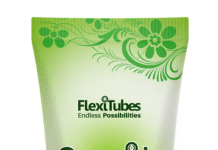To meet sustainability targets and fulfill commitments to the plastics circular economy, producers of plastic articles are increasingly using polymers that are compostable. Clariant’s business unit Pigments is contributing to this growth in compostable plastic articles, with a range of certified OK compost INDUSTRIAL pigments, offering customers new colouring opportunities.
Nine selected products in Clariant’s PV Fast and Graphtol ranges now feature the label OK compost INDUSTRIAL, that fully meet the requirements of the European Union EN 13432: 2000 standard when not used above the maximum concentration in the final application, representing a significant contribution to sustainability.
“We are proud of this development that is part of our strategy to offer solutions for more sustainable packaging and to strengthen our product portfolio,” said Andreas Buder, technical marketing manager Plastics at Clariant. “This certification allows our customers to use bright colours in their biodegradable products since they are suitable for industrial composting.”
Clariant pigment colouration characteristics
The PV Fast and Graphtol range of pigment powders are high-performance organic pigments. Both product ranges are used in various applications in the consumer goods sector, such as sensitive food contact packaging, plastics tableware/dishware, or toys.
The colouration of biodegradable polymers requires the pigments to meet certain characteristics in order to be considered compostable. For processing through organic recovery facilities, this requires a low heavy metal and fluorine content, and no ecotoxicity towards plants.
Clariant is a sustainable specialty chemical company based in Muttenz, near Basel/Switzerland. On 31 December 2020, the company employed a total workforce of 13,235. In the financial year 2020, Clariant recorded sales of CHF 3.860 billion (approximately Rs 31,317 crore) for its continuing businesses. The company reports in three business areas, namely, care chemicals, catalysis, and natural resources. Clariant’s corporate strategy is based on five pillars: focus on innovation and R&D, add value with sustainability, reposition portfolio, intensify growth, and increase profitability.
Clariant’s Business Unit Pigments is a leading global provider of organic pigments, pigment preparations, and dyes. The vastly diverse portfolio corresponds to the high standards for colours and coatings in industrial, automotive, and architectural applications. The business unit also provides solutions for the plastics industry, for special applications in the aluminum, agricultural, and consumer goods sector, as well as for traditional printing processes, inkjet printing, and toner applications. The pigments business unit continues to bring new and innovative materials to the market, with a strong emphasis on environmental aspects and sustainability.











